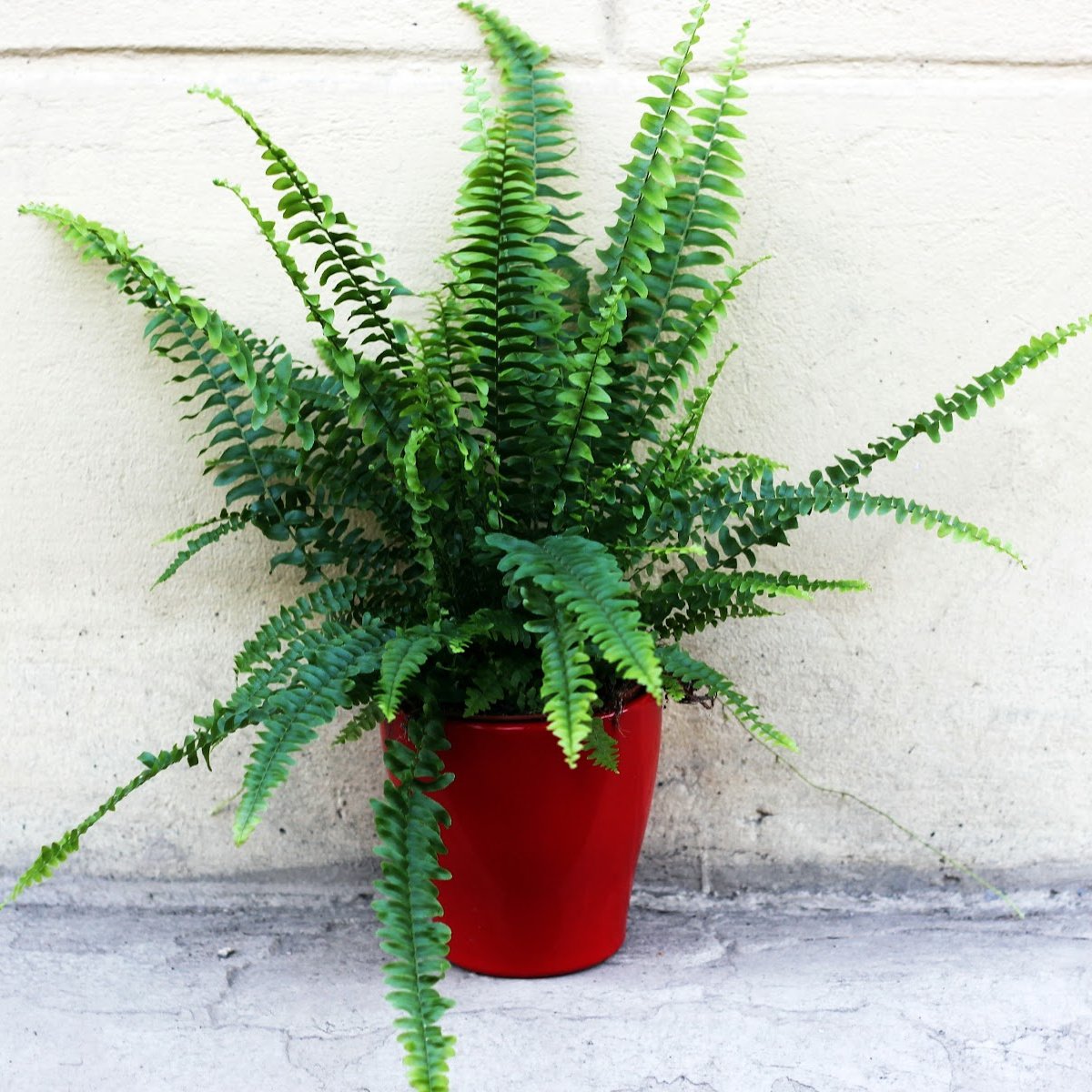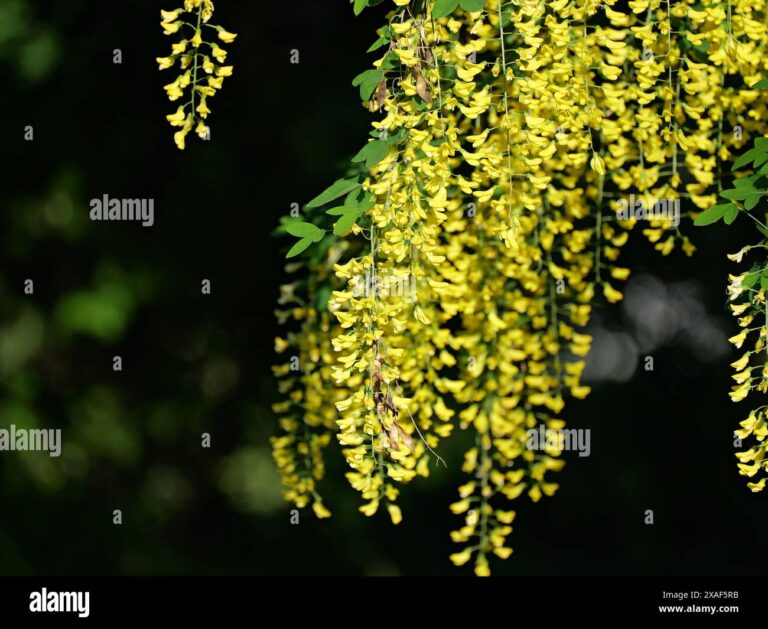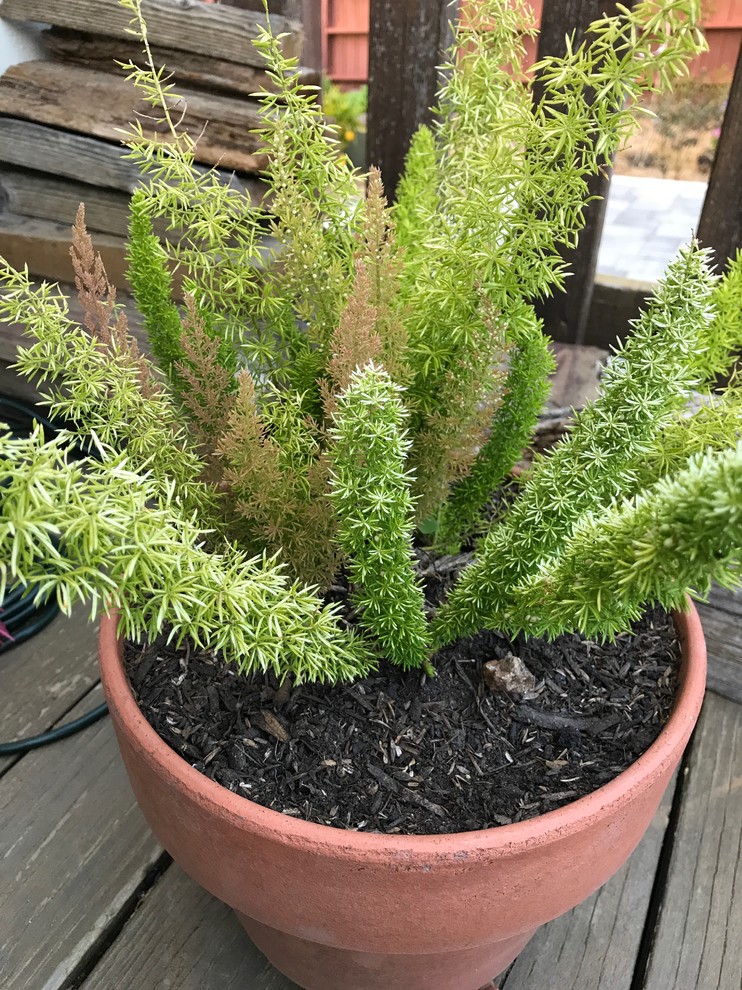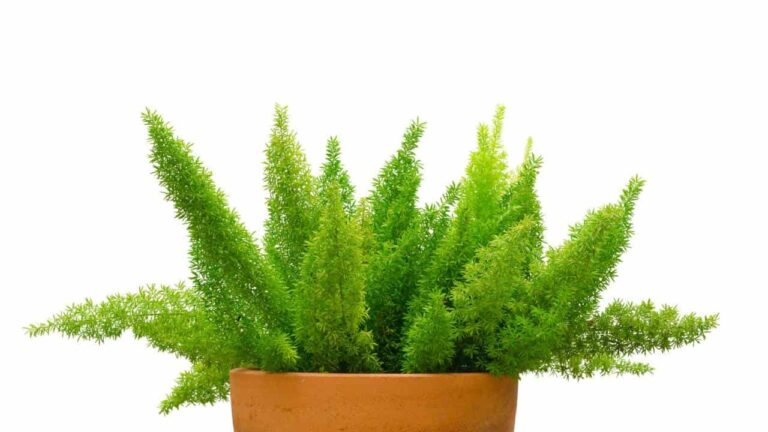Maintaining Healthy Ferns
Ensuring the health of your ferns involves several key practices, from proper watering techniques to the maintenance of humidity levels. Below are essential tips for keeping your ferns thriving.
Proper Watering Techniques
Ferns thrive in conditions that mimic their natural tropical environment, which means they need a consistent and plentiful supply of water. The soil should stay evenly moist, but not waterlogged or saturated. When the surface of the soil is dry, it’s time to water fern plants again.
For some types of ferns, such as brake ferns, holly ferns, and rabbit’s foot ferns, allowing the soil to slightly dry out before watering is beneficial. These varieties do not require consistently moist soil.
| Fern Type | Watering Needs |
|---|---|
| General Ferns | Keep soil evenly moist |
| Brake Ferns | Allow soil to slightly dry out |
| Holly Ferns | Allow soil to slightly dry out |
| Rabbit’s Foot Ferns | Allow soil to slightly dry out |
For more detailed watering guidance, see fern plant watering.
Using Epsom Salt for Fern Care
If your ferns are not thriving and the leaves turn yellow, it might be a sign of magnesium or sulfur deficiency. Epsom salt, composed of approximately 13% sulfur and 10% magnesium, can provide these nutrients and acts as a fertilizer. The recommended mixture is two tablespoons of Epsom salt per gallon of water.
Importance of Humidity
Humidity plays a crucial role in the care of ferns. Ideally, humidity levels should be between 40-50%. However, typical home moisture levels in temperate climates can be as low as 5 to 10 percent (Brooklyn Botanic Garden). Methods to maintain proper humidity include:
- Daily watering
- Using water-filled saucers or trays with a layer of pebbles
- Utilizing a humidifier
| Method | Description |
|---|---|
| Daily Watering | Watering ferns daily to maintain moisture |
| Water-filled Saucers | Using saucers filled with water and pebbles |
| Humidifier | Employing a humidifier to keep humidity levels between 40-50% |
For more information on general fern care, see fern plant care.
Ensuring proper watering, nutrient supplementation, and maintaining adequate humidity levels are critical steps in maintaining healthy ferns. For more specific details on different fern varieties or additional tips, visit our extensive guides on fern plant care in winter, fern plant temperature tolerance, and fern plant propagation.
Indoor Care Tips
Proper indoor care is essential for maintaining the health and vitality of ferns. Here are some key considerations for fern plant care:
Light Requirements for Ferns
Ferns require specific light conditions to thrive indoors. Light requirements vary among different types of ferns:
- Boston Ferns: Prefer moderate to high levels of bright, indirect light. They can tolerate lower light conditions but may not grow as vigorously or produce as many fronds (Lively Root).
- Holly Ferns: Suited to low light conditions.
- Bird’s Nest Ferns: Need bright but indirect sunlight, with northern window exposure being ideal (UGA Extension – Growing Ferns).
Proper light exposure is crucial for fern health. Too much direct sunlight can damage the foliage, making it dry and brittle with brown edges. For detailed light needs, check our article on fern plant light requirements.
| Fern Type | Light Requirement |
|---|---|
| Boston Fern | Bright, indirect light |
| Holly Fern | Low light |
| Bird’s Nest Fern | Bright, indirect light |
Soil Selection and Potting Tips
Choosing the right soil and potting method is vital for growing healthy indoor ferns:
- Soil: Use a light and fluffy mix that includes organic matter like peat moss or leaf mold. This ensures well-drained soil, which is essential for ferns’ shallow roots.
- Pots: Both plastic and clay pots are suitable. Ferns typically have shallow roots, so repotting is needed before they become root-bound.
| Soil Component | Benefit |
|---|---|
| Peat Moss | Adds acidity and retains moisture |
| Leaf Mold | Improves soil structure and fertility |
Propagation Methods
Ferns can be propagated through various methods, each offering unique advantages:
- Division: This involves separating the plant into smaller sections, each with its own roots. It’s the most straightforward and commonly used method.
- Planting Bulbils: Some ferns produce bulbils (tiny plantlets) that can be planted separately.
- Cutting and Planting Rhizomes: Rhizomes can be cut and planted to grow new fern plants.
- Spores: Ferns produce spores instead of seeds. Spores can be harvested from the underside of fronds and planted.
For more detailed propagation methods, refer to our guide on fern plant propagation.
By understanding the light requirements, proper soil selection, potting tips, and propagation methods, one can ensure optimal fern plant care indoors.
Boston Fern Care Guide
Light Preferences of Boston Ferns
Boston ferns thrive in bright but diffused light, which is similar to the dappled sunlight they receive in their natural habitats. Direct sunlight, especially during midday, can lead to scorched leaves and dried-out fronds. Ideally, Boston ferns should be positioned in a location that provides bright, filtered light for at least a couple of hours daily (Lively Root).
Boston ferns can tolerate some early morning or late afternoon sun, but the strong midday sun can cause leaf burn and dehydration (Florasense). They do not thrive in total shade and require moderate to high levels of bright, indirect light (Clean Air Gardening).
For more detailed information on light requirements for ferns, visit our guide on fern plant light requirements.
| Light Type | Effect on Boston Ferns |
|---|---|
| Bright, Indirect Light | Optimal growth and health |
| Direct Midday Sunlight | Scorched leaves and dehydration |
| Low Light Conditions | Reduced growth and fewer fronds |
Temperature Considerations
Boston ferns are sensitive to temperature extremes and prefer a consistent environment. Ideally, these ferns thrive in temperatures ranging from 60°F to 75°F (15°C to 24°C) (Brooklyn Botanic Garden). Sudden changes in temperature, as well as exposure to cold drafts or direct heat sources, can stress the plant and lead to leaf drop.
During the winter months, it is essential to maintain indoor temperatures around the lower end of their preferred range. For specifics on winter care, read our article on fern plant care in winter. Avoid placing the fern near windows or doors where cold air can seep in, and keep it away from radiators or heating vents.
Consult our detailed guide on fern plant temperature tolerance for more insights.
Seasonal Lighting Adjustments
Seasonal changes can affect the lighting requirements for Boston ferns. During the winter, the sun’s angle is lower, which can reduce the amount of light reaching your plants. To compensate, you might need to move your fern closer to a window or provide supplemental lighting. Conversely, in summer, the sun is higher and more intense, so ensure your fern is protected from direct sunlight during the hottest parts of the day to prevent leaf burn (Lively Root).
Adjustments in placement based on seasonal changes are crucial for sustaining the health of Boston ferns. For further tips, refer to our articles on fern plant care indoor and managing light conditions year-round.
Visit our dedicated guides for more in-depth advice on fern plant dying and how to prevent it, as well as tips for avoiding leaf burn in ferns.
Pest Management for Ferns
Maintaining healthy ferns involves vigilant pest management. Understanding common pests, prevention methods, and effective control techniques is crucial for successful fern plant care.
Common Fern Pests
Ferns can be susceptible to several common pests:
| Pest | Description | Symptoms |
|---|---|---|
| Scale Insects | Small, immobile insects that attach to leaves and stems | Yellowing leaves, sticky residue |
| Aphids | Tiny, soft-bodied insects that feed on sap | Wilting, distortion, yellowing fronds |
| Mealybugs | Soft-bodied insects resembling tiny cotton balls | Wilting, yellowing, sticky honeydew residue |
| Leaf Spot Diseases | Fungal infections causing spots on fronds | Small circular spots, premature defoliation |
| Rhizome Rot | Fungal pathogens affecting underground rhizomes | Wilting, frond collapse |
Information courtesy of Tennessee Nursery
Preventing Pest Infestations
Effective pest prevention methods for ferns include:
- Regular Inspection: Frequently check fern plants for early signs of pest infestations.
- Manual Removal: Remove visible pests such as scale insects and mealybugs by hand.
- Hygiene Practices: Maintain clean gardening tools and remove dead leaves and debris.
- Proper Spacing: Ensure adequate spacing between plants to improve air circulation.
- Natural Predators: Introduce beneficial insects like ladybugs and lacewings to control aphids and other pests.
Effective Pest Control Methods
Once pests are identified, the following control methods can be employed:
- Scale Insects: Use horticultural oil or insecticidal soap to eliminate scales. Manual removal can be done using a soft brush.
- Aphids: Dislodge aphids with a strong water jet or introduce natural predators such as ladybugs.
- Mealybugs: Treat infestations with rubbing alcohol or a soapy water solution.
- Leaf Spot Diseases: Remove infected fronds and use fungicides with copper or sulfur to manage outbreaks.
- Rhizome Rot: Remove infected plants and apply fungicides containing thiophanate-methyl or metalaxyl.
For more comprehensive information on dealing with specific pest problems, refer to our articles on how to deal with a fern plant dying and preventative measures for fern plant care in winter.
By following these steps, gardeners can ensure their ferns remain vibrant and healthy throughout the growing season.




